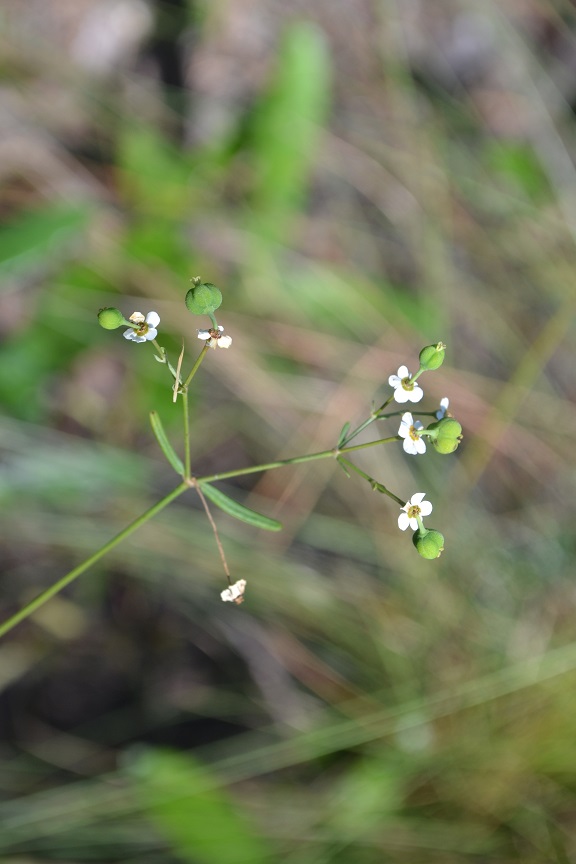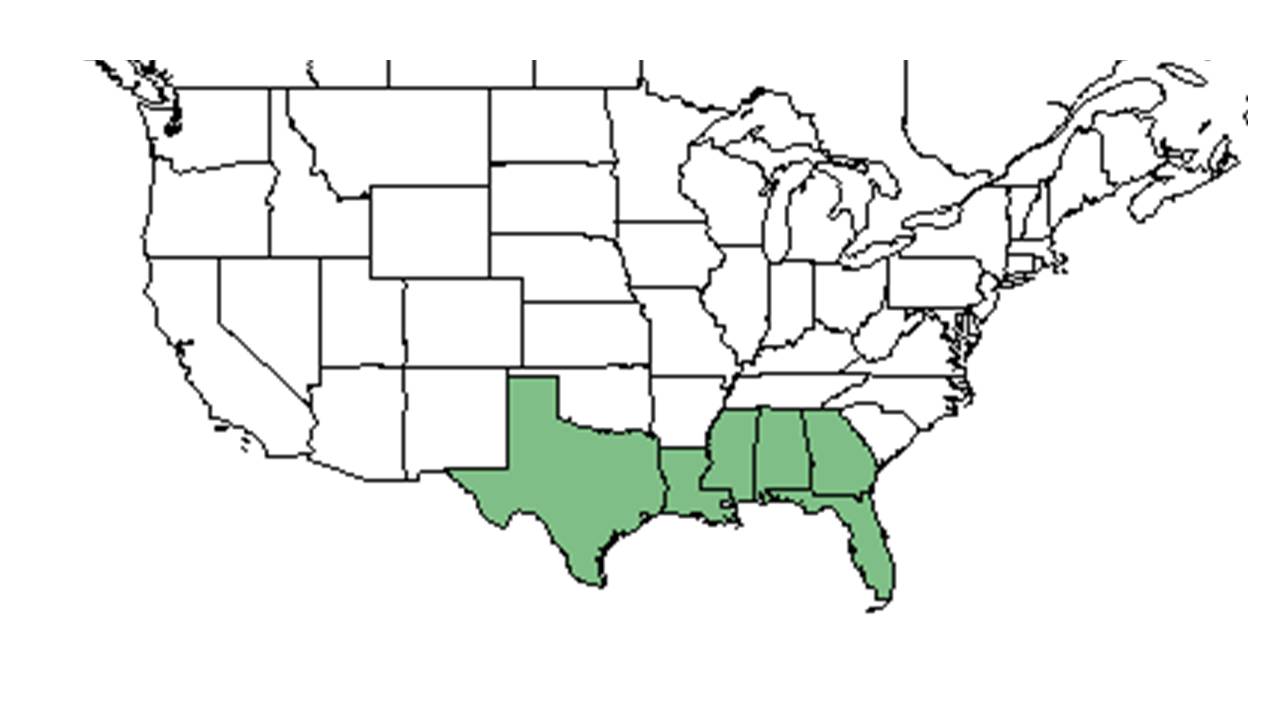Difference between revisions of "Euphorbia discoidalis"
(→Distribution) |
|||
| Line 28: | Line 28: | ||
==Ecology== | ==Ecology== | ||
===Habitat=== <!--Natural communities, human disturbed habitats, topography, hydrology, soils, light, fire regime requirements for removal of competition, etc.--> | ===Habitat=== <!--Natural communities, human disturbed habitats, topography, hydrology, soils, light, fire regime requirements for removal of competition, etc.--> | ||
| − | + | It is primarily found in sandhills.<ref name= "Weakley"/> Other habitats that have been observed of ''E. discoidalis'' include pine dominated habitats such as longleaf pine scrubs, sandhills, upland pine, and drained uplands. It prefers areas that have high light level/ open canopies. It also occurs in disturbed habitats such as fallow fields, clearings, and in annually burned pinelands. It likes sandy soil types.<ref name=fsu>Florida State University Robert K. Godfrey Herbarium database. URL: http://herbarium.bio.fsu.edu. Last accessed: June 2014. Collectors: R. A. Norris, R. Komarek, Andre F. Clewell, Robert K. Godfrey, Jefferson, R. Komarek, Loran C. Anderson, Travis MacClendon, Karen McClendon, G. Wilder, Ann F. Johnson, Wilson Baker, and G. Wilder. States and Counties: Florida: Calhoun, Jackson, Leon. Georgia: Thomas.</ref> ''Euphorbia discoidalis'' is restricted to native groundcover with a statistical affinity in upland pinelands of South Georgia.<ref name=ostertag>Ostertag, T.E., and K.M. Robertson. 2007. A comparison of native versus old-field vegetation in upland pinelands managed with frequent fire, South Georgia, USA. Pages 109–120 in R.E. Masters and K.E.M. Galley (eds.). Proceedings of the 23rd Tall Timbers Fire Ecology Conference: Fire in Grassland and Shrubland Ecosystems.</ref> Populations appear to increase due to disturbance.<ref name="Kral 1983"/> | |
Associated species include longleaf pine, slash pine, shortleaf pine, oaks, red oak, mockernut hickory, magnolia.<ref name=fsu/> | Associated species include longleaf pine, slash pine, shortleaf pine, oaks, red oak, mockernut hickory, magnolia.<ref name=fsu/> | ||
Revision as of 20:16, 10 May 2019
| Euphorbia discoidalis | |
|---|---|

| |
| Photo taken by Kevin Robertson | |
| Scientific classification | |
| Kingdom: | Plantae |
| Division: | Magnoliophyta - Flowering plants |
| Class: | Magnoliopsida – Dicotyledons |
| Order: | Euphorbiales |
| Family: | Euphorbiaceae |
| Genus: | Euphorbia |
| Species: | E. discoidalis |
| Binomial name | |
| Euphorbia discoidalis Chapm. | |

| |
| Natural range of Euphorbia discoidalis from USDA NRCS Plants Database. | |
Common name: Summer spurge
Contents
Taxonomic notes
Synonyms: Tithymalopsis discoidalis (Chapman) Small; E. corollata var. corollata
Description
Distribution
Euphorbia discoidalis is distributed from eastern and central Georgia south and west to the Florida panhandle and eastern Texas.[1]
Ecology
Habitat
It is primarily found in sandhills.[1] Other habitats that have been observed of E. discoidalis include pine dominated habitats such as longleaf pine scrubs, sandhills, upland pine, and drained uplands. It prefers areas that have high light level/ open canopies. It also occurs in disturbed habitats such as fallow fields, clearings, and in annually burned pinelands. It likes sandy soil types.[2] Euphorbia discoidalis is restricted to native groundcover with a statistical affinity in upland pinelands of South Georgia.[3] Populations appear to increase due to disturbance.[4]
Associated species include longleaf pine, slash pine, shortleaf pine, oaks, red oak, mockernut hickory, magnolia.[2]
Phenology
It flowers from late August to frost.[4] This species has been observed flowering in August and September.[2]
Fire ecology
This species is found in areas that are burned annually such as longleaf pine-wiregrass savannas and sandhills.[2] It responds positively to fire. Kral (1983) writes "In naturally stocked uplands it increases as a result of woods fires which reduce competing woody vegetation." [4]
Conservation and management
Cultivation and restoration
Photo Gallery
References and notes
- ↑ 1.0 1.1 Weakley, A. S. (2015). Flora of the Southern and Mid-Atlantic States. Chapel Hill, NC, University of North Carolina Herbarium.
- ↑ 2.0 2.1 2.2 2.3 Florida State University Robert K. Godfrey Herbarium database. URL: http://herbarium.bio.fsu.edu. Last accessed: June 2014. Collectors: R. A. Norris, R. Komarek, Andre F. Clewell, Robert K. Godfrey, Jefferson, R. Komarek, Loran C. Anderson, Travis MacClendon, Karen McClendon, G. Wilder, Ann F. Johnson, Wilson Baker, and G. Wilder. States and Counties: Florida: Calhoun, Jackson, Leon. Georgia: Thomas.
- ↑ Ostertag, T.E., and K.M. Robertson. 2007. A comparison of native versus old-field vegetation in upland pinelands managed with frequent fire, South Georgia, USA. Pages 109–120 in R.E. Masters and K.E.M. Galley (eds.). Proceedings of the 23rd Tall Timbers Fire Ecology Conference: Fire in Grassland and Shrubland Ecosystems.
- ↑ 4.0 4.1 4.2 Kral, R. (1983). Euphorbia discoidalis Chapman. A report on some rare, threatened or endangered forest-related vascular plants of the South. R. Kral. Atlanta, USDA Forest Service, Paper 228: 701-705.